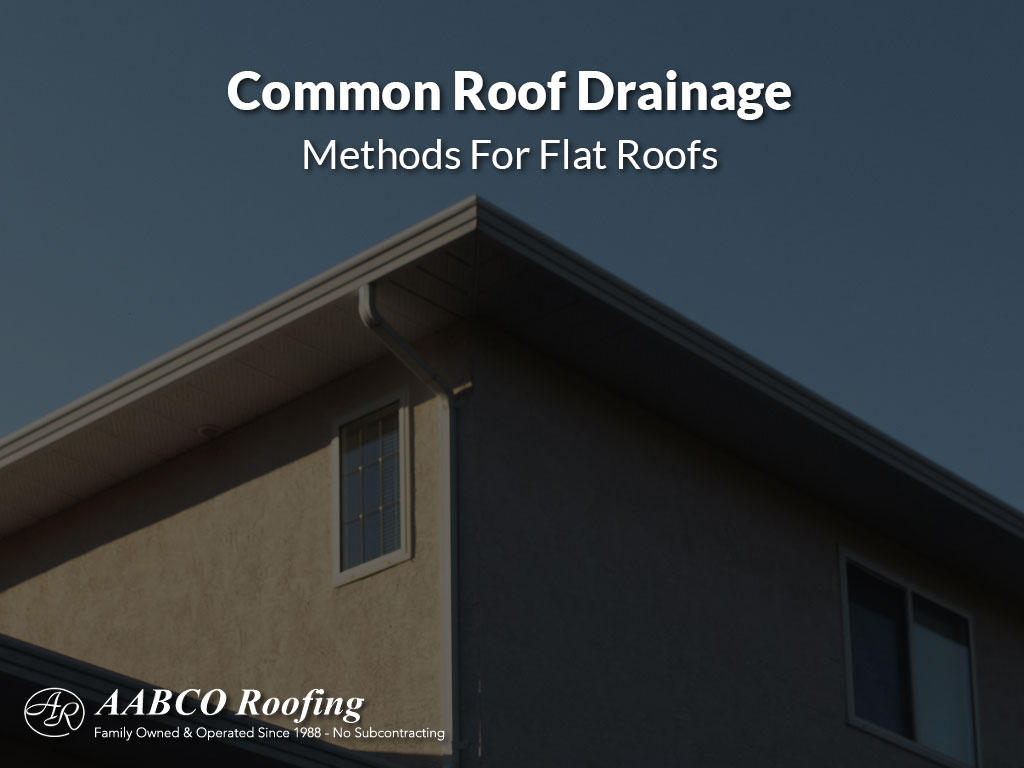
Flat roofs have unique and desirable architectural characteristics. However, these unique characteristics have their own set of unique challenges, like roof drainage.
There are several reasons why someone would choose to install a flat roof. It can be converted into a rooftop garden or even into extra living space. Unfortunately, this roofing option’s flat nature means that water is unable to simply slide off.
If the water has nowhere to go, it will begin to pool and cause a few other roofing issues. Therefore Aabco Roofing would like to share three flat roof drainage system options with you.
What Is a Flat Roof Drainage System?
Any moisture left on a roof has the potential to cause damage. This is where drainage comes to the rescue.
Once a flat roof drainage system is installed, it directs water and debris off the roof. Typically, the drainage system begins at the roof line and extends all the way to the ground.
Three Roof Drainage Options
Having a good drainage system in place is very important. There are several roof drainage systems but these three are the most common options.
Internal Drains
While internal drains can be used for residential purposes, they are usually found on the roofs of large, commercial buildings.
These roof drainage systems are usually placed in the middle of the roof, or where the water seems to collect the most. Customizable strainers are fitted to prevent any debris from clogging the pipes. These drains are connected to pipes underneath the building’s roof. The water is then drained through the roof, protecting the integrity of the building as it does.
Installing the pipes underneath the roof has a few benefits for the system and the building’s integrity. This drainage system helps to keep water away from the building’s walls and foundation. In return, the building’s walls protect the pipes from the elements.
The great thing about internal drains is that it is customizable. This means that it can be created in such a way that it increases curb appeal.
Scuppers
Have you ever noticed openings near a building’s roof line and wondered what they are? Well, chances are that you were looking at scuppers.
Scuppers are openings in a building’s outer wall or along the roof line. They are a drainage system that allows water to run through the walls while enclosed in a metal box. This box both surrounds and protects the scuppers while the water is shot away from the building instead of running down the side.
If this flat roof drainage system is installed by a professional, like Aabco Roofing, it is usually the best-valued drainage option. Scuppers are customizable, low cost, and low maintenance making them a very appealing option.
Gutters
When looking at all roofing types, gutters are the most common roof drainage option, for several reasons.
Gutters are inexpensive, easy to get, and even easier to install. They also guide water away from the roof instead of allowing it to pour off uncontrollably. This drainage option even protects doorways and windows, while preventing water from pooling near the foundation.
Contact ABC Roofing Today for Your Roof Drainage Solutions
There are many benefits to choosing a flat roof for your home. Unfortunately, these benefits can only be enjoyed if the correct roof drainage system is installed.
Any of the three options mentioned will prevent water from pooling on your roof and causing damage. So, call Aabco Roofing today at 954-426-8500 for all your roofing needs. We’d love to hear from you and help to make all your flat roof dreams come true!
